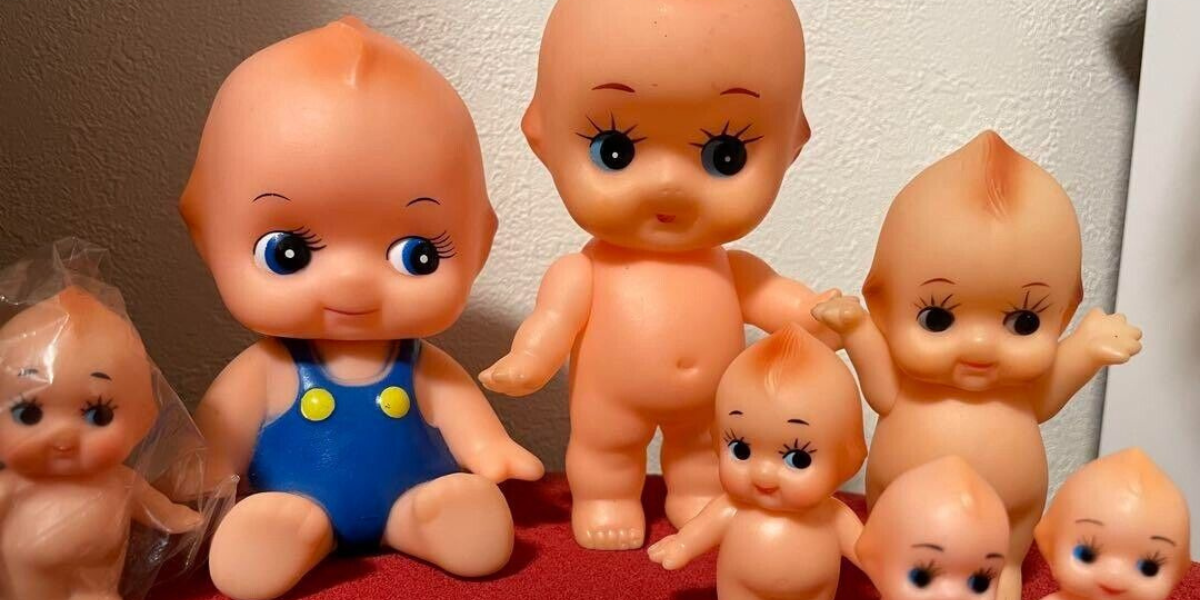Kewpie dolls, with their wide-eyed innocence and cherubic features, have captured the hearts of collectors and children alike for over a century. These adorable dolls have a rich history and a distinctive design that sets them apart from other toys. In this article, we will explore the origins, cultural impact, and enduring appeal of Kewpie dolls, as well as answer some frequently asked questions about these beloved collectibles.
Origins of the Kewpie Doll
Creation by Rose O’Neill
The Kewpie doll was created by Rose O’Neill, an American illustrator and writer, in the early 1900s. The character first appeared in a comic strip in 1909 and quickly gained popularity due to its charming and whimsical nature. The name “Kewpie” is derived from “Cupid,” the Roman god of love, reflecting the doll’s endearing and playful personality.
Transition to Dolls
The success of the Kewpie comic strip led to the production of Kewpie dolls in 1912. The first dolls were made of bisque porcelain, featuring the signature topknot of hair, chubby cheeks, and a mischievous smile. These early dolls were meticulously crafted and became highly sought after by collectors.
Characteristics of Kewpie Dolls
Design and Features
Kewpie dolls are known for their distinctive and easily recognizable features. They typically have:
- Round, chubby cheeks
- Big, wide eyes
- Small, pursed lips
- A single topknot of hair
- Chubby, dimpled limbs
- A mischievous and innocent expression
The dolls are often depicted with small wings on their backs, reminiscent of cherubs, adding to their angelic appearance.
Materials and Variations
Over the years, Kewpie dolls have been made from various materials, including bisque, celluloid, composition, hard plastic, and vinyl. Each material offers a different texture and durability, catering to both collectors and children. There are also numerous variations in size, ranging from tiny figurines to larger dolls, as well as different outfits and accessories that reflect the era in which they were produced.
Cultural Impact of Kewpie Dolls
Popularity and Collectibility
Kewpie dolls quickly became a cultural phenomenon after their introduction. They were marketed extensively and became popular prizes at carnivals and fairs. Their endearing design and the sentimentality associated with them made Kewpie dolls highly collectible. Vintage Kewpie dolls, particularly those made of bisque or celluloid, are now prized items in the world of doll collecting.
Influence on Advertising and Merchandise
The widespread appeal of Kewpie dolls extended beyond toys. They were used in various forms of advertising and merchandise, from postcards and calendars to kitchenware and clothing. The Kewpie brand became synonymous with charm and innocence, making it a popular choice for marketing a wide range of products.
International Recognition
Kewpie dolls also gained international recognition, particularly in Japan, where they were embraced with great enthusiasm. The dolls became a beloved part of Japanese culture and continue to be popular to this day. In Japan, Kewpie dolls are often associated with cuteness and are a common motif in various forms of pop culture and design.
FAQs
1. What makes Kewpie dolls collectible?
Kewpie dolls are collectible due to their historical significance, unique design, and the nostalgia they evoke. Vintage Kewpie dolls, especially those made from bisque or celluloid, are highly sought after by collectors and can command high prices at auctions.
2. How can I identify an authentic Kewpie doll?
Authentic Kewpie dolls often have markings or stamps indicating their origin, such as “O’Neill” or “Made in Japan.” The distinctive features, such as the topknot of hair and the chubby cheeks, are also key identifiers. Consulting reference books or experts in doll collecting can help verify the authenticity of a Kewpie doll.
3. Are Kewpie dolls still being produced today?
Yes, Kewpie dolls are still being produced today. Modern versions are typically made from vinyl or hard plastic and are available in various sizes and styles. While they may not have the same collectible value as vintage dolls, they remain popular as nostalgic toys and decorative items.
4. What are some tips for caring for a Kewpie doll?
To care for a Kewpie doll, avoid exposing it to direct sunlight, extreme temperatures, or humidity, as these can damage the material. Clean the doll gently with a soft, damp cloth and mild soap if necessary. For vintage dolls, it is best to consult a professional restorer for any repairs or extensive cleaning.
5. Can Kewpie dolls be customized or dressed up?
Yes, many Kewpie dolls can be customized or dressed up with different outfits and accessories. This adds a personal touch and allows collectors to create unique displays. There are also various sewing patterns and kits available for making custom clothes for Kewpie dolls.
6. What is the significance of the wings on Kewpie dolls?
The wings on Kewpie dolls are a nod to their inspiration from Cupid, the Roman god of love. The wings add to the doll’s angelic and cherubic appearance, enhancing its overall charm and innocence.
Conclusion
Kewpie dolls have stood the test of time, enchanting generations with their innocent charm and whimsical design. Whether you are a collector, a nostalgic enthusiast, or someone discovering these delightful dolls for the first time, the appeal of Kewpie dolls is undeniable. Their rich history, cultural impact, and timeless design make them a beloved and enduring symbol of innocence and joy.
Read More Our Blogs
